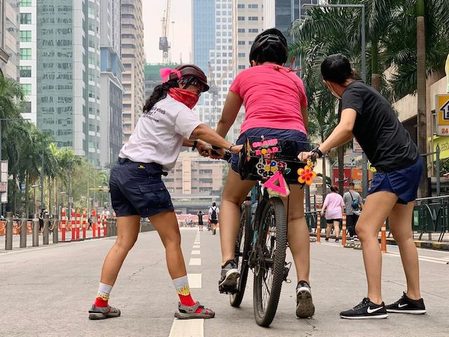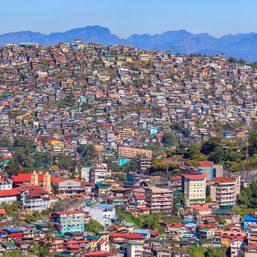SUMMARY
This is AI generated summarization, which may have errors. For context, always refer to the full article.
![[OPINION] Cities and public spaces should be for people first](https://www.rappler.com/tachyon/2024/04/imho-people-first-city-04132024.jpg)
Why is our overall transport system in the metro dysfunctional? One glance at our city and we see a transport system dominated by vehicles. We have streets that make the news for road congestion, featuring lanes of cars and little to no people walking.
In creating our policies, we’ve failed to recognize the most important principle of transport and cities: Cities are first and foremost made for people. The public realm, the network of open spaces outside private properties that serve as the glue of our cities, should be designed for people.
To address our transport woes, let’s talk first about what the public realm should be. We should realize that transport is only a secondary function of our public spaces. The most essential function of the public realm is to enable people to be their natural selves and be social persons in the city. People naturally walk, talk, sit, and linger. We explore and build meaningful memories in the city through public spaces. As such, our public spaces should accommodate these natural behaviors.
Before the advent of motorized transport, settlements were compact, and people were the main feature in these spaces. Even with motorization, our streets, parks, and plazas should still be for people first. Only with this lens can we create a transport policy and system with people at the forefront.
In the Philippines, we’ve done the opposite. We’ve distilled public spaces into corridors that purely facilitate the transport of motor vehicles. With our basic city design and focus on simple infrastructure implementation, our streets treat people as an afterthought.
We pave roads in developing areas to fit faster and more cars, but we don’t have sidewalks that are humane for people to walk on. Plazas and parks are rarely developed. Trees to cool our streets are absent – just more concrete roads and inadequate sidewalks.
In reducing our understanding of public spaces as only transport corridors, we branded these areas as “multifunctional streets,” where people and cars share the space. Kaya naman maglakad ng tao sa daan eh.
But motorized vehicles, with their speed, size, and mass, are dangerous and box people out. This is applicable when these vehicles speed through our streets, but equally important when cars coopt space meant for people while in traffic or for parking.
I have personally experienced this inconvenience in Poblacion, Makati. Traffic was building up, and motorists crammed to whatever open space was left, advancing only a few meters while clogging sidewalks and making congestion worse. I had to stare down a motorcycle running through the sidewalk, forcing me to step aside.
This experience is a reality to many pedestrians in Philippines. We have been conditioned to accept the status quo that we are obstacles to motorists on the road and that sidewalks are meant to be narrow and have obstructions. Moreover, we’ve accepted that public spaces in the city, such as parks, esplanades, and plazas, can only be in select areas and not in our communities.
But in other countries, the main staple of cities are public places that are full of people and life, not cars. When we go abroad, we are refreshed in exploring and lingering in these spaces. Frankly, there are no enjoyable tourist destinations where people are pushed to the side to accommodate cars and traffic. There are no postcards that feature traffic and clogged streets. We value traveling to street markets, plazas, parks, and train stations designed intuitively for people.
Why don’t we demand the same here in Metro Manila and the Philippines?
We need to reimagine our public spaces as places where people are the main characters. In this people-centric thinking, our transport policy and systems should naturally be rooted in empowering the ordinary citizen, where the commuter experience is light and not taxing.
In thinking about what we want from our cities, we ask the question: Bida ba ang tao sa siyudad na tinitirahan ko? Can I explore my neighborhood without pollution, danger, and being relegated to the sidelines? Is my community connected with an engaging street network that is not hostile but alive with people, interspersed with parks that serve as retreats within the city, and plazas where people can congregate?
Again, the public realm that glues the city together should be where the focus on people is most seen. This thinking clicked in my mind as I was passing a jogger through a city district with warehouses and bare streets. There were no trees, and the sidewalks were disconnected, but the jogger was by the roadside, enjoying his exercise.
Our natural behaviors won’t be erased if we design streets hostile to humans. The effect is that, as citizens, our potential to be people won’t be fulfilled. People will still jog, walk, rest, socialize, and even practice dance numbers on whatever open space is left. Accommodating citizens with better spaces is the only solution to make our cities more liveable. Dapat bida ang pangkaraniwang tao.
Onto transport: Bida ba ang tao sa mga kalsada natin? Transport begins and ends with walking as the most basic mode of mobility and transport. We should enable people to walk to their destination. Other modes of transport should seamlessly interconnect with and be viewed as potent extensions of walking. In picturing a street and in implementing its design, people walking should be integral in its function.
Our road network and streets are in disarray because we haven’t made it conducive for walking, and transitions from walking to alternative modes of transport are inadequate. Alongside carriageways for vehicles, sidewalks and pathways should exclusively be for people, not cars. Walkways should be direct and legible to signify that the walking person is the priority.
Bida ba ang naglalakad, nagbibisikleta, at komyuter sa kalsada? Bida ba ang mga komyuter sa pila sa terminal? Sa pagsakay sa pampublikong transportasyon, mukha ba silang naaalagaan? Bida ba ang tao at wala sa peligro na mabangga ng sasakyan? Nauuna ba ang pagkakaroon ng maaliwalas na lakaran bago ang paradahan ng kotse?
We are only beginning to re-realize this truth that has been erased in our city building agenda for a long time now. We need public spaces in the form of public parks, plazas, street markets, and jogging loops in our city that are repeated and accessible throughout the city.
Nobody can reject the immense benefit of projects such as Car-Free Sundays in Ortigas and Ayala Avenue. The clamor we display for the esplanades along Pasig River is not unfounded but long overdue. These projects create spaces where people can just be people.
The public realm might be developed and maintained by the government, but the rationale behind its design should reflect how citizens want to thrive in the cities that we live in. We need to challenge the status quo. Our street design and transport systems should not be limited by the imagination and standards of the implementors. Rather, they should meet what the citizens deserve and what will make us thrive.
Advocate for your neighborhood and ask: Bida ba ang tao sa lugar ko? Bida ba ako dito? And by asking these questions, we can shape our cities to have an engaging, living, and empowering public realm.
#TaoAngBida
#TayoAngBida
– Rappler.com
Rigel Magcale is a concerned Metro Manila citizen that has interests in urban planning, placemaking, and in understanding how Philippine cities can become better places to live in.
Walkable and vibrant streets is one way to #MakeManilaLiveable. Join Rappler and our civil society partners in pushing for improved quality of life in Philippine cities, starting with the capital region. Learn more about the Make Manila Liveable movement here.
Add a comment
How does this make you feel?

![[DOCUMENTARY] Biking 120 kilometers in Metro Manila](https://www.rappler.com/tachyon/2024/03/bike-commute-metro-manila-documentary-carousel-scaled.jpg?fit=449%2C449)









![[Under 3 Minutes] When will we see modern jeepneys on the road?](https://www.rappler.com/tachyon/2024/04/francisco-motors-modern-jeepney-prototype-1.jpg?resize=257%2C257&crop=590px%2C0px%2C1012px%2C1012px)
There are no comments yet. Add your comment to start the conversation.